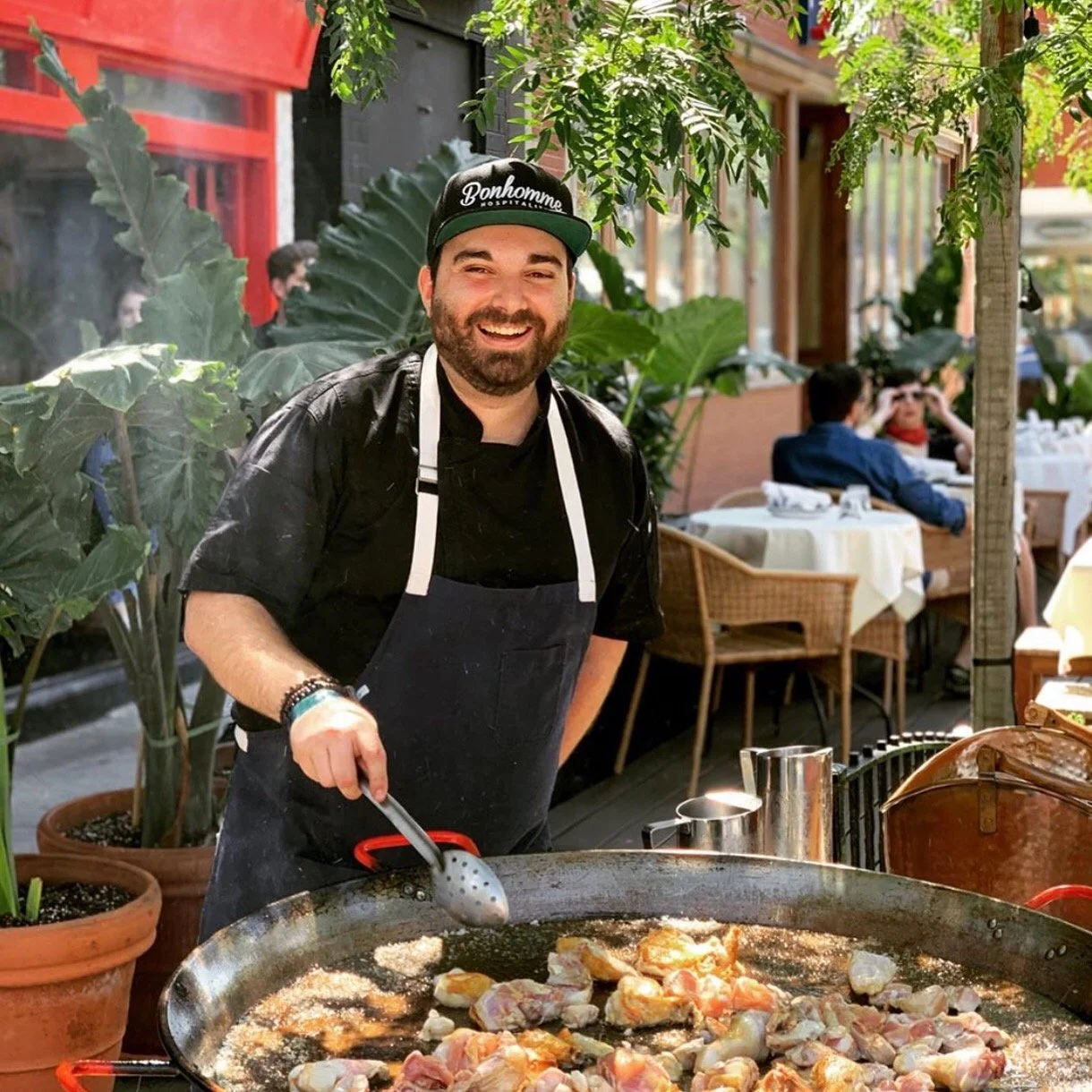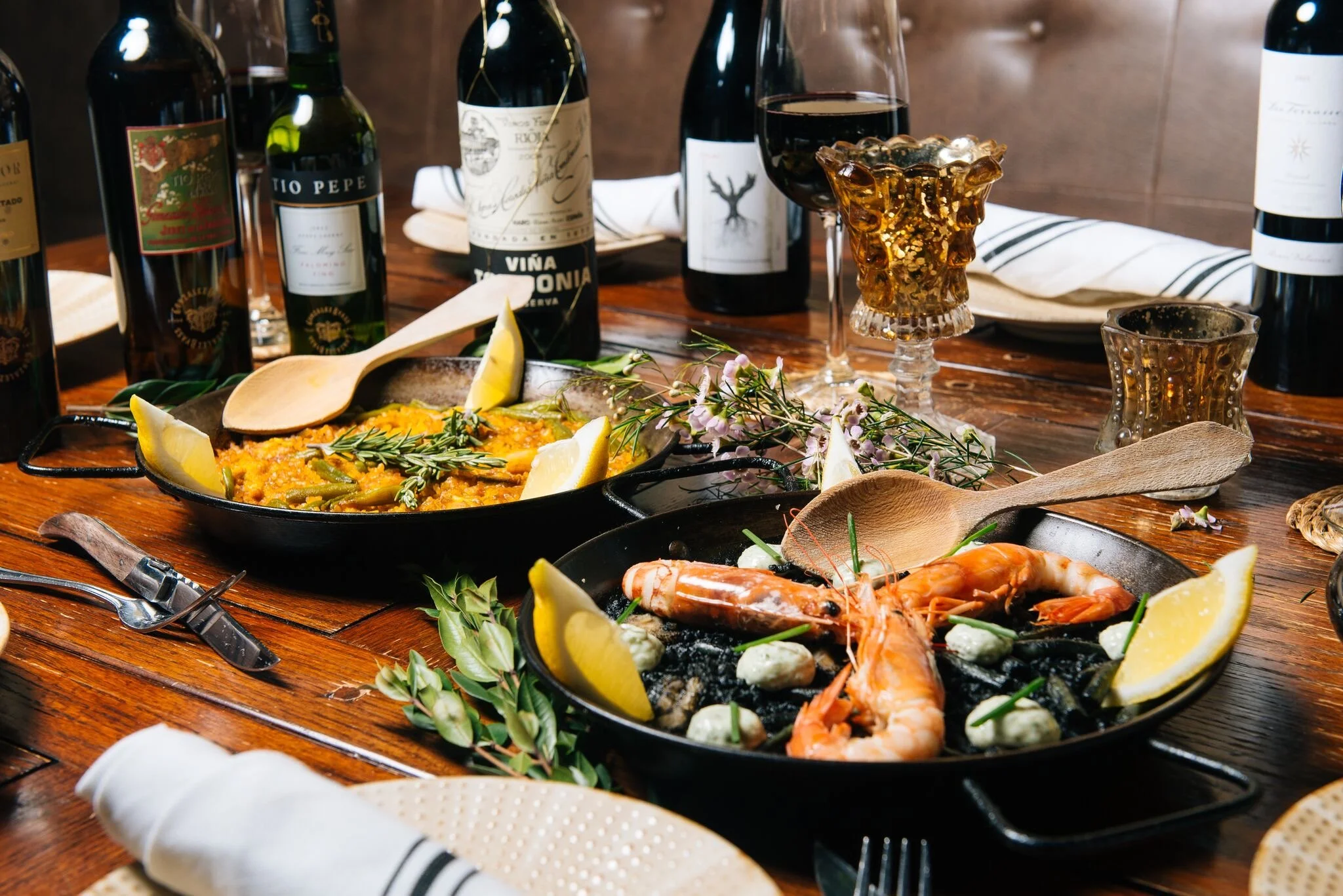Rice, rice, baby: For most of us paella is simply a popular Spanish dish. For Bonhomme Hospitality Chef Marcos Campos it’s a way of life.
A native of Valencia, the coastal Spanish city where paella’s signature rice is grown and hence the birthplace of the dish, Marcos Campos grew up spending his Sundays with family — and always a paella or two. The Sunday paella tradition, however, isn’t limited to Valencia; it’s an end-of-the-week ritual found throughout Spain.
“Paella is more than just a dish,” says Marcos. “It’s serves as a way to bring friends and family together.” (For the record: The word “paella” is the name of the huge pan the dish is made in, not the dish itself. Paella pans can be so big that they sometimes must be carried by two or more people and set up on outdoor stoves as they are often too large to fit on traditional kitchen stoves.)
Initially it was Marcos’ grandmother, aunt or father who oversaw making the Sunday paella. But once Marcos became a chef — at the age of TK, no less — the honor was passed to him.
At Wicker Park’s Mama Delia, Marcos continues his family’s tradition six days a week and, yes, including Sundays. “Growing up in Valencia, there’s a lot of sentiment and respect that goes into making paella,” says Marcos, adding that it was the first dish he and his fellow students were taught at culinary school in Valencia. “At the end of the day, I need to make sure I am following the flavors and techniques behind it to make sure my family would be proud of me as a Valenciano doing paella in another country.”
For Marcos, that means starting with the best ingredients, including the signature rice, bomba or calasparra, both rough grains that can better absorb the delicious broth and flavors from the added ingredients than traditional rice. For paella Valenciana, considered by many to be the original recipe, Marcos browns bone-in chicken thighs and rabbit in olive oil, scraping up the flavorful caramelized bits. Pimenton de Vera (Spain’s smoky paprika-esque spice) gets added along with fresh tomatoes, vegetables and gigante beans. Water is added, and after a low-and-slow simmer to bring the flavors together, rice and saffron.
From there, it’s important not to shake or stir the ingredients, either of which will prevent the soccarat — the delicious layer of crispy rice on the bottom of the pan — from forming. “It’s just one pan, but there are a lot of things happening in it,” says Marcos.
But no matter if you order paella Valenciana, arroz negro (bomba rice, squid ink, calamari, baby scallops, head-on prawns, saffron, parsley aioli) or one of Marcos’ equally delicious fideuas (similar to paella but with noodles replacing the rice), there is a traditional way to eat it.
“You put the pan in the middle of the table, and everybody eats directly from the paellera,” says Marcos. “Each person creates their own little paella ‘triangle’ respecting the space of everyone else.” (Note: Mama’s servers are happy to provide plates too, but what’s the fun of that?). “It’s all about getting people to interact. Paella brings people together in a big way.”







